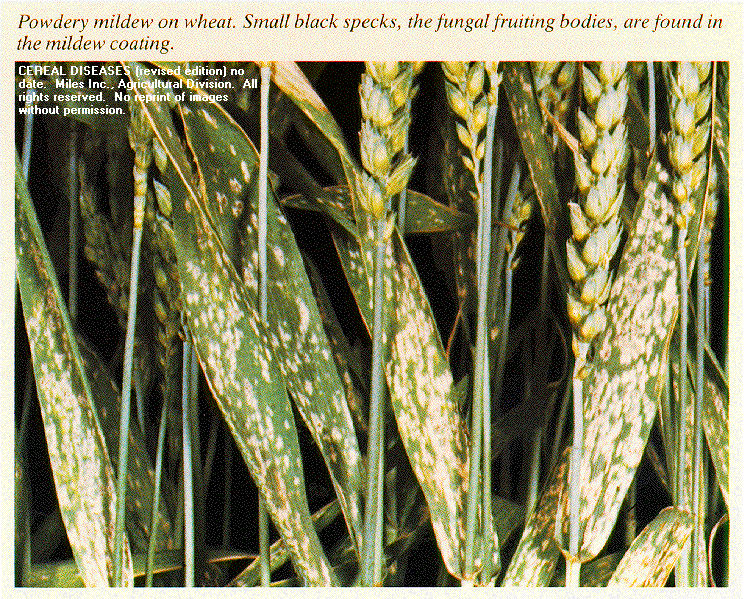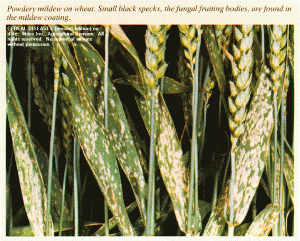July 26, 2014 – Powdery mildew-resistant wheat has been created using a pair of DNA-clipping and insertion tools, TALENs and CRISPR. These are tools developed by Editas Medicine for editing defective DNA and are being used in the fight against a number of genetic diseases. And with wheat they are proving to be useful in overcoming the devastating impact of mildew.
Powdery mildew is caused by the fungus, Blumeria Graminis. It colonizes the leaf surfaces of plants without killing them (see the picture of infected wheat below) and is commonly found wherever wheat is grown. It particularly likes areas where spring precipitation is significant feeding off the moisture. Although it doesn’t kill the wheat it inhibits the plants to produce seeds, or reduces grain size, and even impacts the protein yield when milled into flour. Total yield reductions for infected fields can be as high as 40%. Attempts to wipe it out include crop rotation practices or the application of fungicides which are less than 100% effective because spores can hibernate in the soil for years and propagate with the planting of a new crop.
In modifying wheat DNA, researchers from the Chinese Academy of Sciences, haven’t introduced genetic information from any other source into the wheat DNA. Instead they have chosen to break an existing gene to suppress a common infection. The gene in question is the mildew-resistance locus. By suppressing it the researchers have enhanced the wheat’s natural ability to fight mildew infestations. This is a very different application of the tools used in genetic modification.
What makes this accomplishment particularly exciting is that wheat presents a degree of complexity for those in the field of genetically modified organisms. Wheat is one of a wide number of polyploid crops and plants that we rely on for food. Among these are grains like rye, barley, oats. Like wheat these grain crops have a common feature. They make six copies of all of their chromosomes with three versions of all genes. They are referred to as hexaploids. We diploid humans pale in comparison with only two copies of each of our chromosomes. It is the polyploid nature of these plants that complicates the task of gene suppression. Instead of tackling one gene to accomplish your goal you have to tackle three.
The new strain of wheat featuring suppressed mildew-resistance locus genes is currently being tested in laboratory settings. The results of the research appear in the current issue of Nature Biotechnology.





















